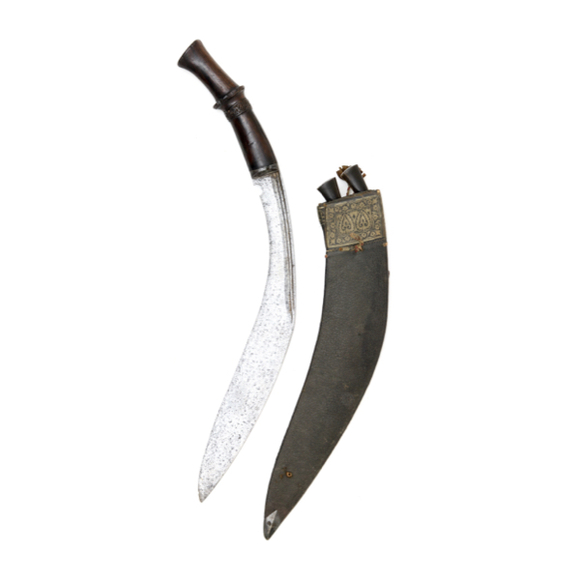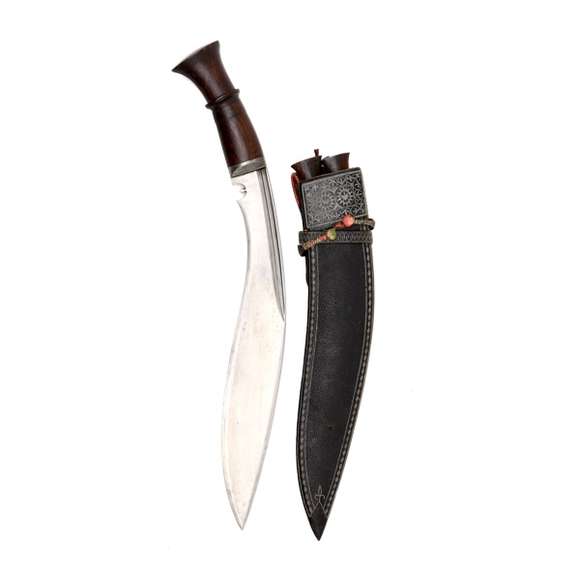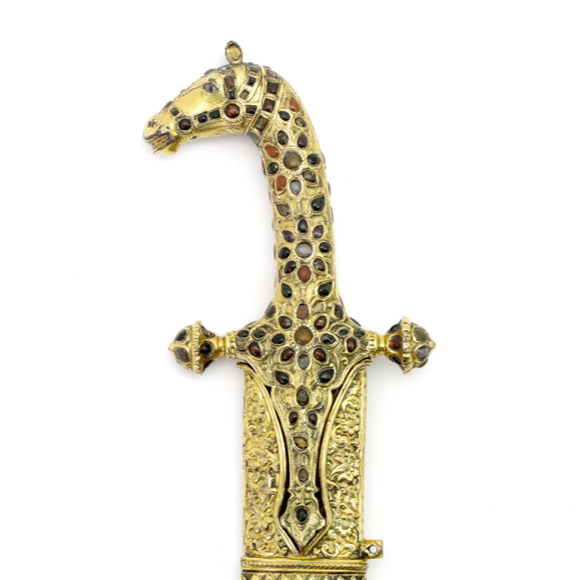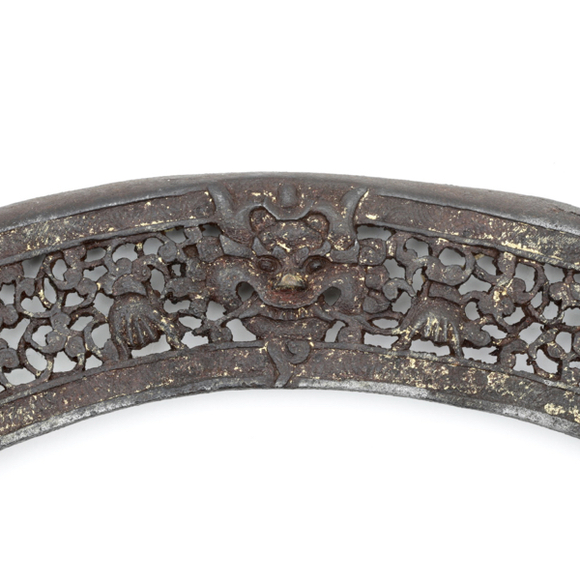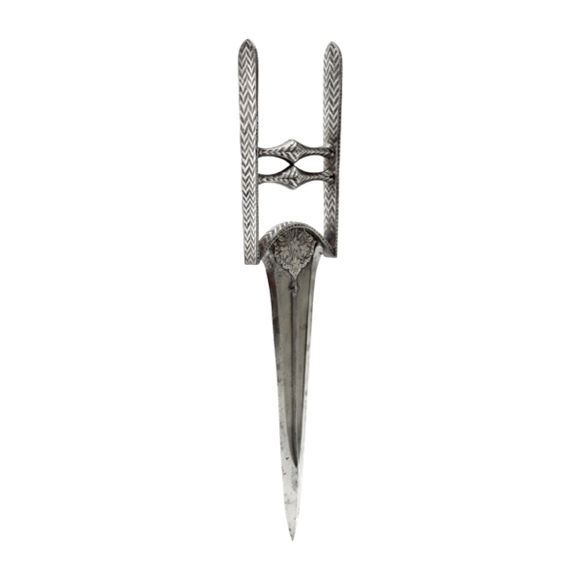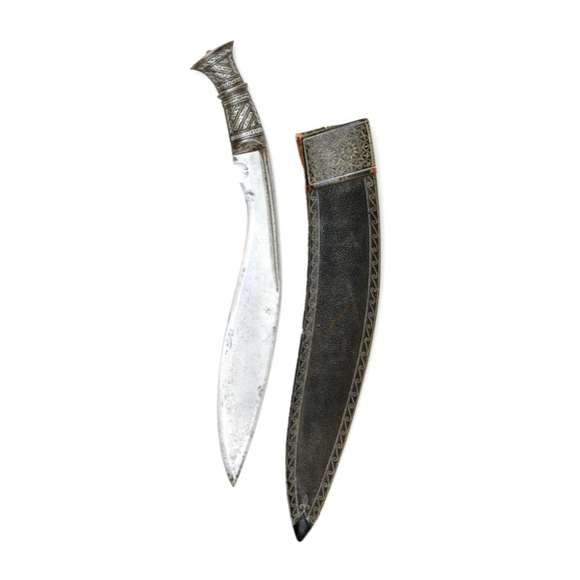Language: Hindi
Source: Period sources
Description
Sadeli (सदेली) is the Hindi name of a type of marquetry that is primarily associated with the town of Surat on the coast of Gujarat.
Sadeli is done by joining long strips of different materials and cross-sections into long rods, that are then cut into slices, each slice showing the rod's cross-section. Materials used were often horn, bone, ivory, ebony, and various metals.
The technique originally came from Persia where it is called khātam, and was probably first introduced into Surat through Sindh. Indian craftsmen developed their own distinct forms from there. By 1903, the chief centers of its production also included Ahmedabad, Baroda and Bombay.

A sadeli walking cane. Listed at Mandarin Mansion in 2020.
In period sources
A description of sadeli from the Indian Art in Delhi exhibition of 1902-1903:
"Marquetry, erroneously spoken of as inlaid work, is largely practised in India.
It has been placed, as a matter of convenience, under this Divi-
sion. It is known locally as Sadeli work and the chief centres
of the craft are Ahmedabad, Baroda, Bombay and Surat. It
would appear that the art came to India from Persia (Shiraz)
through Sind, perhaps 300 years or so ago. Certain of the doors
in the old palace of Nurber near Jaipur are ornamented in this style.
(1630 A. D.) It was first acquired by the Hindus and then sub-
sequently taught to the Parsis. The so-called “Bombay boxes”
were apparently “Sadeli boxes" though the expression was early
made to embrace carved w^ood or ivory boxes as also boxes
partly of sandal and partly of sadeli or simply of carved-wood
and sadeli mixed, provided they were made in Gujarat.
The materials employed are ivory and horn (plain, or col-
oured green and blue) black ebony, red-wood and tin or silver, applique)
These are cut into long thin strips of various shapes and are marquetry.
glued together in such a manner as to show, on transverse section,
geometric patterns of rich and varied design, believed to be
traceable to an original floral conception. Thin strips or veneer-
ing ribbons are thus made by transverse section on a series
of parellel strands and these ribbons are then glued to the
surfaces of the boxes, cabinets, etc., as desired. Sometimes panels
of richly carved sandal-wood or of black ebony, are framed
in sadeli ware, or at other times the surfaces of the cabinet or
other article are entirely covered with sadeli." 1
-Sir George Watt, 1903.
This exhibition contained among others:
A chess-table exhibited by Framjee P. Bhumgara of Bombay, price Rs. 375.
An erect cabinet shown by Muncharam Govind Ram of Bombay, price Rs. 625.
A shawl box by Verji Vandas Sedasive of Bombay, price Rs. 187.
A writing-desk by Kachra Doolabhram of Mangrol, Rs. 125
A black ebony tea-caddy with borders of sadeli by Jamsetji Nasarwanji Petigara of Surat. 2
Notes
1. Sir George Watt; Indian Art at Delhi, 1903: Being the Official Catalogue of the Delhi Exhibition, 1902-1903. Published by the superintendent of government printing, Calcutta, India. Illustrations by Wiele & Klein of Madras. 1903. Pages 156-157.

